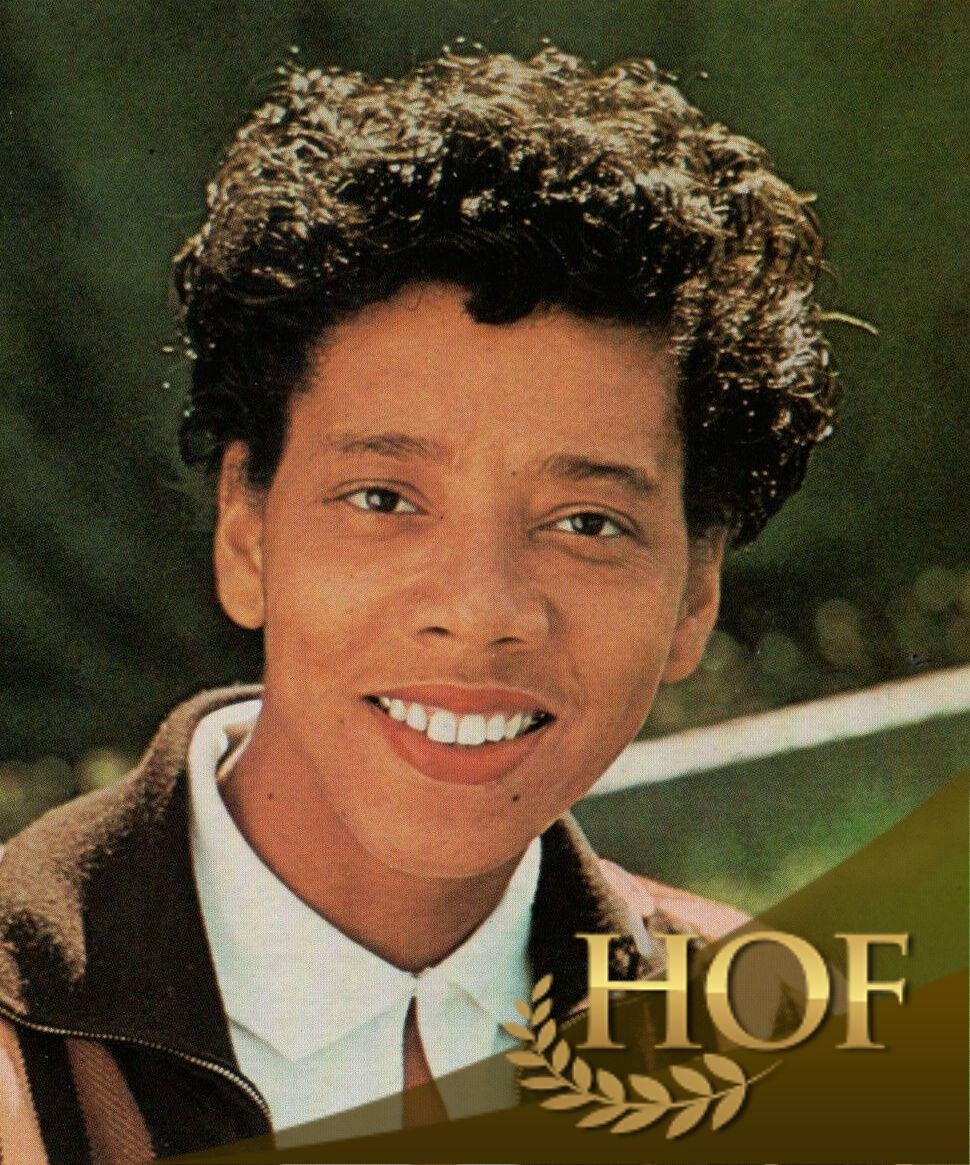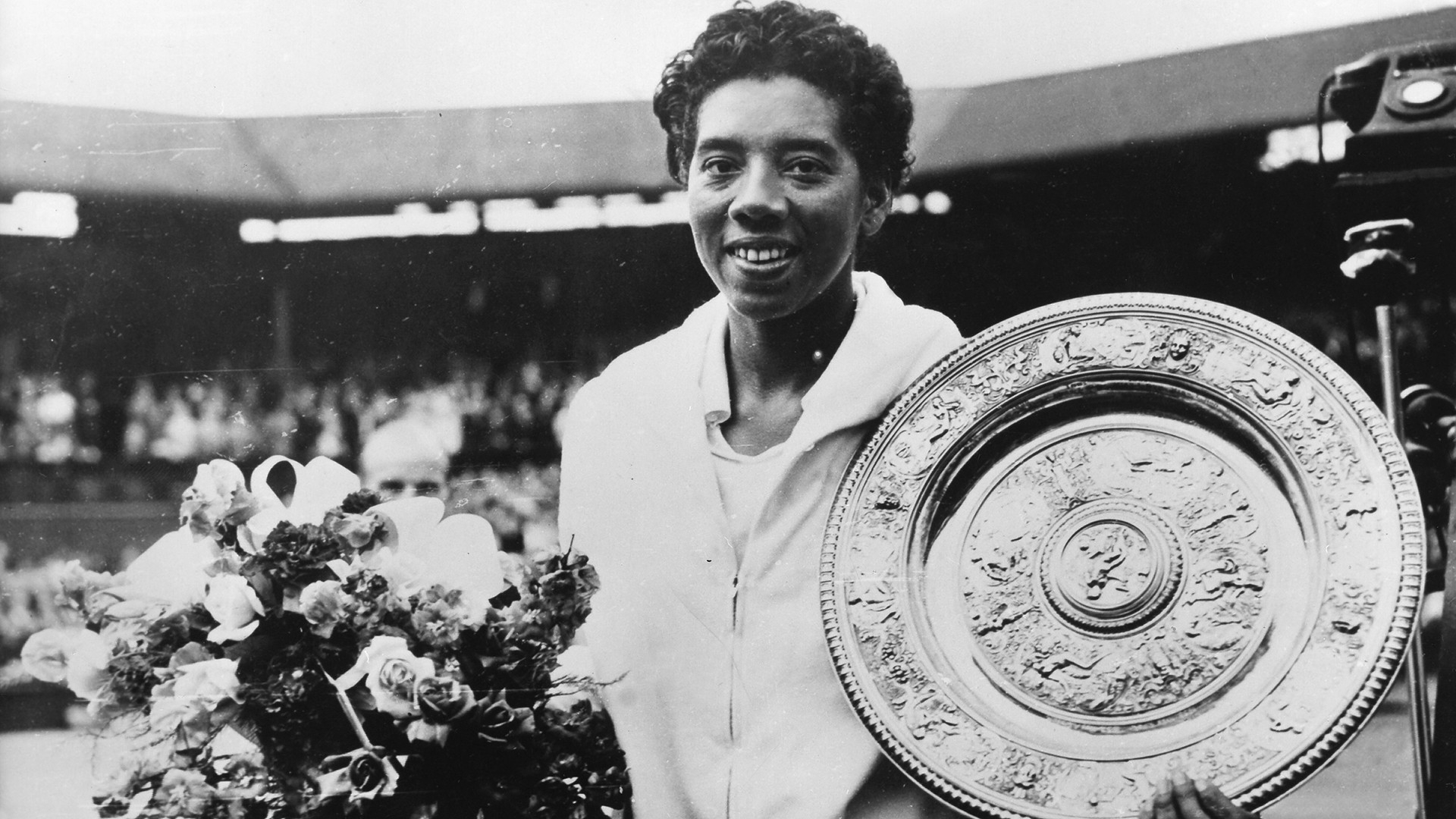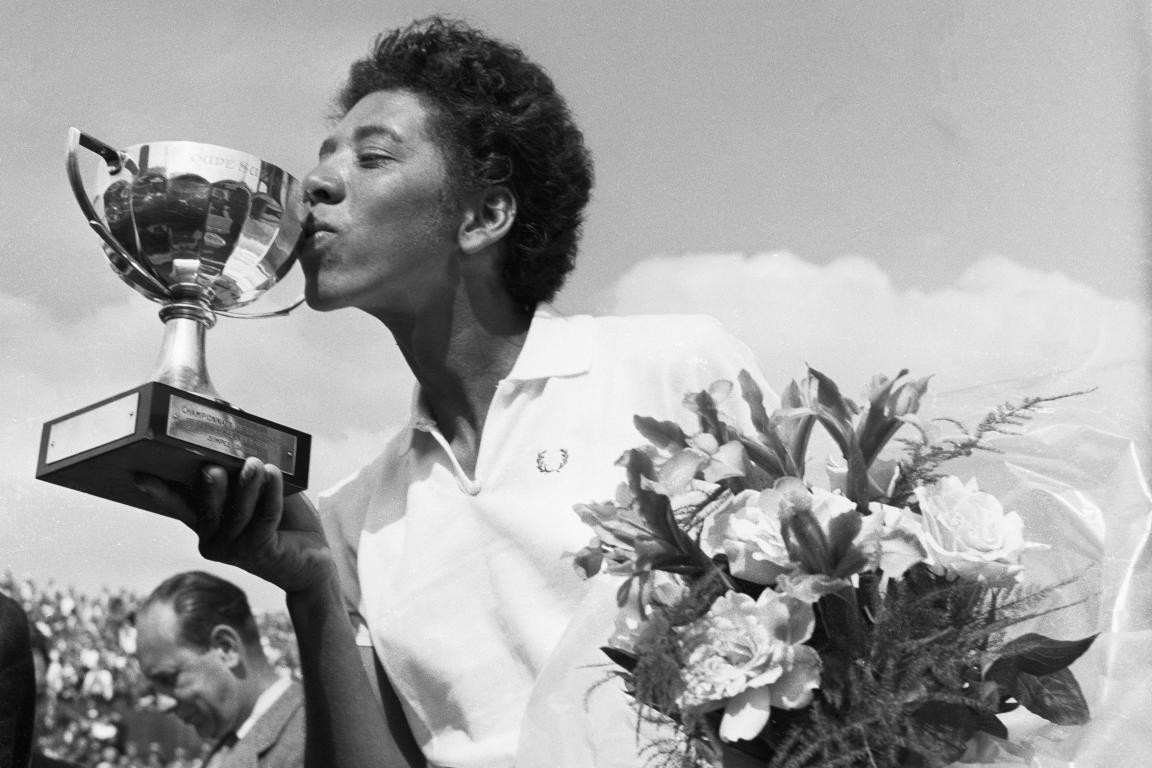Althea Gibson, First Black Wimbledon Champion, Dies at 76
Share free access
By The New York Times
Sept. 28, 2003
Althea Gibson, the gangly Harlem street urchin who parlayed an asphalt championship in paddle tennis into an unlikely reign as queen of the lawns of Wimbledon and Forest Hills, died Sunday. She was 76.
From New York Slums to Genteel Worlds of Tennis
By ROBERT McG. THOMAS Jr.
Although Althea Gibson won 56 tournaments, including five Grand Slam singles titles, she has been chiefly remembered as the first black Wimbledon champion and the first black player to enter and win the national championship at Forest Hills.
But it is easy to forget that in the rarefied world of tennis, it was hardly more remarkable that a black player would enter and win the All England and American championships than that the champion would be a rough-hewn product of the New York slums.
Yet that was exactly what Gibson was when she was growing up in Harlem far removed from the two genteel worlds of tennis: the white country club set and the network of black doctors, lawyers, and other professionals who pursued tennis on private courts of their own.
For all her natural ability and gritty determination, Gibson owed much of her later success to that very network of black tennis enthusiasts — and to a geographic coincidence.
Althea Gibson was born in a sharecropper's shack in Silver, S.C., on Aug. 25, 1927, and brought to New York by her parents when she was a few months old. By chance the family moved into an apartment on a West 143rd Street block between Lenox and Seventh Avenues that was a designated play street.
And by further chance, when the volunteers from the Police Athletic League closed the block to traffic and set up their recreation equipment, the spot they chose to mark off as a paddle tennis court was right in front of the Gibson's front stoop.
A natural athlete who excelled in virtually every sport she ever tried, including basketball and softball, Gibson took up paddle tennis at 9 and proved especially adept at the new sport, winning a citywide championship when she was 12.
In 1941, when she was 13, Buddy Walker, a society Harlem bandleader and part-time P.A.L. supervisor, urged her to graduate to tennis. He bought her two rackets and introduced her to friends at the Cosmopolitan Tennis Club, a predominantly black club that played on courts on 149th Street just a few blocks away but a world removed from the neighborhood she had known. There Gibson was coached by Fred Johnson, the one-armed club pro, and taken up by the club's members, who taught her some more important lessons.
As she put it in her 1958 autobiography, "I Always Wanted to Be Somebody," the club attracted "the highest class" of Harlem residents, people, she noted, who "had rigid ideas about what was socially acceptable," ideas, moreover, that were alien to her own experience. "I'm ashamed to say," she wrote, "that I was still living pretty wild."
Indeed, in what had become a widening vicious cycle, Gibson would come home late (sometimes the next day) and her father, a garage attendant, would beat her.
The next time, to avoid her father's wrath, she would stay away even longer and he would beat her that much more.
But Gibson saw her father as merely a stern disciplinarian, not abusive. She even indulged him when he sought to turn her into a boxer but quickly abandoned the effort.
Gibson made a lifelong friendship when she approached her idol, the champion fighter Sugar Ray Robinson, in a bowling alley. Sympathetic to her dream of a career in music, he bought her a saxophone.
Finally, to escape her father's wrath, she sought refuge in a Catholic home for girls and eventually received a welfare grant to get her own apartment while she worked at a succession of menial jobs.
Under the guidance of her new friends at the Cosmopolitan club she was soon defeating virtually everybody she played, winning her first tournament in 1942, the New York State girls championship sponsored by the American Tennis Association, which had been organized in 1916 by black players as an alternative to the United States Lawn Tennis Association.
Although she lost the A.T.A. finals later that year, Gibson continued to improve, so much so that in 1946, when she lost in the final of her first A.T.A. women's championship, she caught the eye of two men who would change her life and alter the course of tennis, Dr. Hubert A. Eaton of Wilmington, N.C., and Dr. R. Walter (Whirlwind) Johnson of Lynchburg, Va.
The two physicians, leaders of a cadre of black enthusiasts determined to crack the racial barriers of mainstream tennis, saw Gibson's potential and became her sponsors in both life and tennis. They arranged that Gibson would live with Dr. Eaton and his wife during the school year, practicing on his court and attending high school, and spend the summer traveling on the tennis circuit with Dr. Johnson, who would later perform a similar service for Arthur Ashe.
Gibson, whose table manners were so atrocious when she first arrived in Wilmington that the Eatons made her eat in the kitchen, blossomed in the refined environment.
As for her education, Gibson was even more tenacious. Considered a hopeless case when she started Wilmington Industrial High School at the age of 19, she finished school in three years, graduating 10th in her class, and promptly enrolled as a scholarship student at Florida A&M, where she received a degree when she was 25.
She also flourished on the court, winning the first of her 10 consecutive A.T.A. national championships in 1947.
Gibson won so handily in A.T.A. tournaments at the beginning of her career that in 1949, a year after Dr. Benjamin Weir had become the first black to play in a U.S.L.T.A. title event, the 1948 National Indoor Championships, Gibson was able to take her own first, tentative steps across the color barrier, making it to the semifinals of the Eastern Indoor Championships and then to the semifinals of the nationals.
The next step proved harder. Even after she had won the 1950 Eastern Indoor Championship and a clamor had begun to let her play in the National Grass Court Championships at Forest Hills, the precursor of the United States Open, the powers of tennis seemed to close ranks to keep her out.
To qualify for an invitation to the 1950 nationals, the tennis association said, Gibson would first have to make a name for herself at one of the major preliminary grass-court events — all invitational tournaments over which the organization had no control.
No invitations were forthcoming.
But the former champion Alice Marble rallied support for Gibson and for the cause of racial justice. "If tennis is a game for ladies and gentlemen," she wrote in a letter to American Lawn Tennis magazine, "it's time we acted a little more like gentlepeople and less like sanctimonious hypocrites."
Finally, Gibson received a grudging invitation to the Eastern grass court championships at the Orange Lawn Tennis Club in South Orange, N.J.
She made it only as far as the second round, but that was enough to win a bid to Forest Hills.
On Aug. 28, 1950, three years after Jackie Robinson had broken the color barrier in baseball, that Althea Gibson became the first black player to compete in the national tennis championship. Taking her place on a remote court at the West Side Tennis Club in Forest Hills, Queens, she dispatched Barbara Knapp of England, 6-2, 6-2.
The next day, she faced the Wimbledon champion, Louise Brough. After losing the first set, 6-1, Gibson took the second, 6-3, then fell behind, 3-0, in the third before beginning a surge that brought repeated roars from 2,000 hardy spectators, who ignored the first peals of thunder and flashes of lightning of a gathering storm. Gibson repeatedly rallied to bring the score to 7-6 and the verge of a victory over her visibly spent opponent.
Then the rains came, the match was suspended. when it resumed the next day, Brough won three straight games to win the match.
Her first appearance at Forest Hills brought the 5-foot-10 1/2-inch Gibson and what was inevitably described as her mannish game to the attention of the tennis public.
A powerful, if inconsistent, player, the lean and muscular young woman had a dominating serve, and her long, graceful reach often stunned opponents.
Over the next half dozen years, Gibson became a fixture on the tennis circuit, playing Wimbledon for the first time in 1951, and earning a ranking as high as No. 7 in the United States, but she was never able to win consistently.
Gibson, who spent two years as a physical education instructor at Lincoln University in Jefferson, Mo., became so disenchanted with her failure to break through to the top ranks that she considered abandoning tennis and entering the Army.
Then, in the fall of 1955, the State Department selected her for a goodwill tennis tour of Asia and the Far East, and the experience seemed to renew her spirit and inspire her game. In 1956 she won 16 of her first 18 tournaments, including the French Open, her first title at a Grand Slam event. But once again, victory in the singles championships eluded her at Wimbledon and Forest Hills, although she had been favored to win both. Gibson did team with Angela Buxton to win the Wimbledon doubles championship in 1956.
Buxton became Gibson's doubles partner in an "odd way," as she remembered it in 1996. "Since Althea was black, she was having a difficult time getting a doubles partner in America," she said, "and since I was Jewish, I was having a similar problem in England. So we just hooked up. And won!"
Gibson was determined that her 1957 singles performances would be different, and after losing the final of the Australian Open, she did not lose another match all year. Passing up the clay court distraction of the French Open to concentrate on tuning up on grass courts in England, she again entered the tournament as the favorite, but this time she did not falter, defeating Darlene Hard in the final. "At last," she said, "at last," as she accepted the trophy from the Queen of England.
She later wrote in her book: "Shaking hands with the Queen of England was a long way from being forced to sit in the colored section of the bus going into downtown Wilmington, N.C."
Having won the most coveted title in tennis, Gibson continued her winning ways in the United States, rolling through the national championship at Forest Hills and settling an old score in the final, defeating Brough, who had eliminated her in her first national seven years before.
After being named the outstanding woman athlete of the year in a poll of Associated Press sports editors, Gibson repeated her victories in 1958, then, under pressure from her family to make some money from her talent, she announced her retirement from amateur tennis.
After making a record album, appearing on the Ed Sullivan Show, and making a movie, "Horse Soldiers," with John Wayne, she decided to try her hand at professional golf.
With her powerful swing, Gibson, in 1963 became the first black player to compete on the women's golf tour. But she had come to the game too late to be effective. Although she continued to play on the tour off and on for years, she never won a tournament.
There was a brief marriage to an old friend and she served two years in the part-time post as New Jersey athletic commissioner, but she resigned in 1977 to make an abortive run for the state senate.
When another black woman, Zina Garrison, made it as far as the Wimbledon final in 1990 before losing to Martina Navratilova, Gibson was there to cheer her on, but she soon receded from the limelight once again, beset, it turned out, by health and financial problems.
ADVERTISEMENT
BY
Looking for more information?
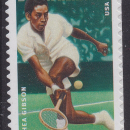
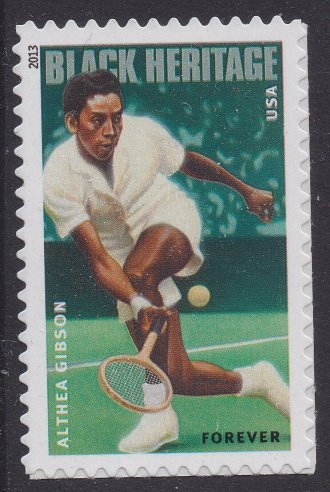
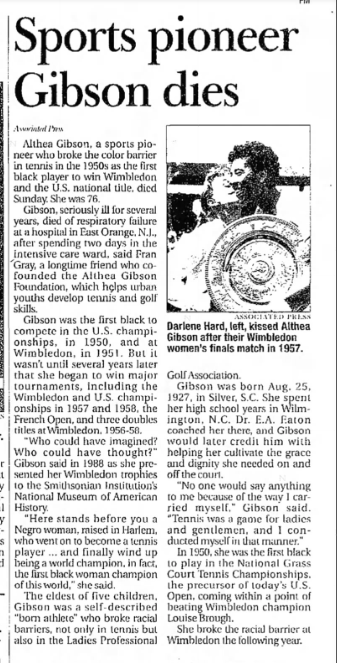
 Lizzie Kunde
Lizzie Kunde 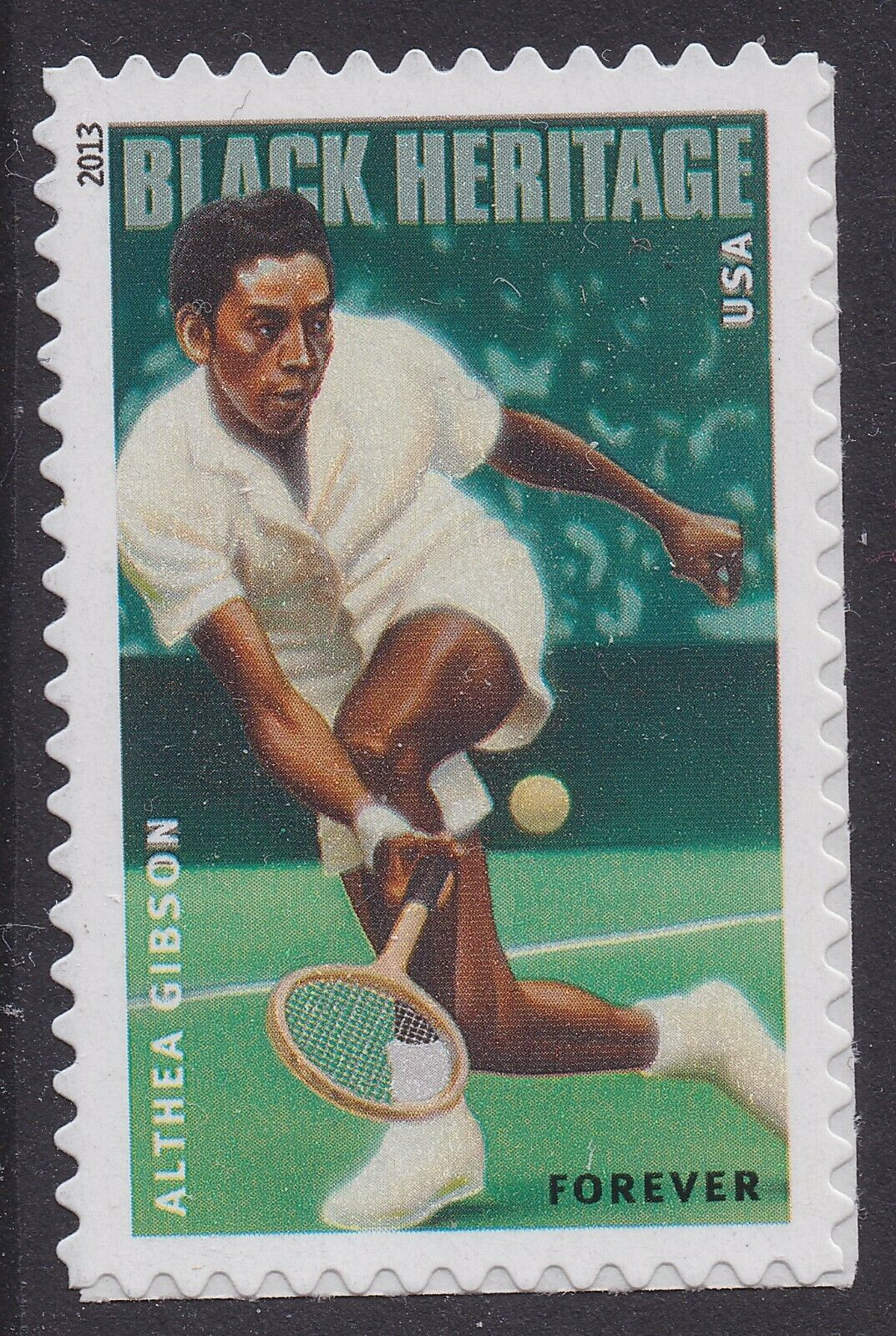
 Amanda S. Stevenson
Amanda S. Stevenson 